28 Wild Animals in Central Africa [Wildlife in Central African Republic]
Want to know more about the wildlife in Central Africa?
Discover 28 wild animals in Central Africa in this post, as well as interesting facts about them. 🇨🇫
TABLE OF CONTENTS
- Learn All About Central African Animals
- Native Animals from the Central African Republic
- Endangered Animals of the Central African Republic
- What is the National Animal of the Central African Republic?
- How Many Animals Native to the Central African Republic?
- What is the most common animal in the Central African Republic?
- More About Animals in the World!
Learn All About Central African Animals
Ready to learn all about Central African animals?
I’ve always been fascinated by animals and by how they can be so different from one country to another. In this guide, we’ll focus on the many animals Central Africa has on the land, in the sky, and underwater.
I’ve split the guide into 5 categories:
- Native animals from the Central African Republic
- Endangered animals of the Central African Republic
- What is the national animal of the Central African Republic?
- How many animals native to the Central African Republic?
- What is the most common animal in the Central African Republic?
Let’s dive in right away with our first category!
Native Animals from the Central African Republic
The Central African Republic is a landlocked African country located in the middle of the continent, below the Sahara. It has major mineral deposits as well as other resources such as uranium, and it used to be a French colony. It is bordered by Chad, Sudan, South Sudan, the Democratic Republic of Congo, and the Republic of Congo, and its capital and largest city is Bangui, which counts more than 889,000 inhabitants.
An interesting part of the country that I wanted to tackle is its wildlife. In light of that, I have listed the best of it, and I hope you will love learning what animals live in the Central African Republic.
Here’s the Central Africa animals list.
1. African forest elephant
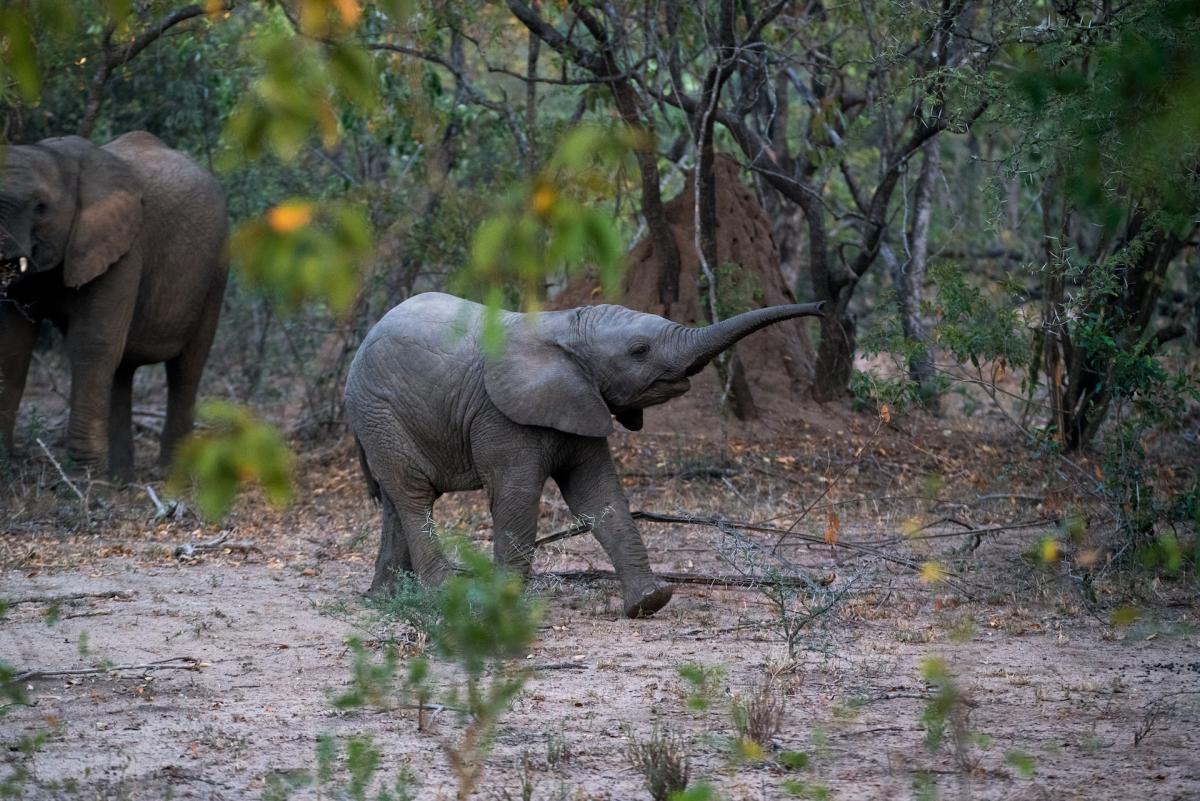
- Name: African forest elephant
- Scientific name: Loxodonta cyclotis
- Conservation status:
The African forest elephant is one of the most famous animals on the continent. It is a symbol of might and pride but is sadly critically threatened by poaching and habitat loss. Its meat is also used in illegal trading, and agricultural expansion destroys the areas it usually lives in.
More and more countries are making conservation efforts, but it appears to not be enough for now. Hopefully, we will still see African forest elephants in a decade.
2. Chimpanzee

- Name: Chimpanzee
- Scientific name: Pan troglodytes
- Conservation status:
The chimpanzee is also a very emblematic animal from Africa. It is closely related to the bonobo, and it lives in groups of 15 to 150 members, though it tends to travel with much smaller groups.
Chimpanzees are threatened by diseases, habitat loss, and poaching, and only several hundred thousand remain in the wild right now, making it an endangered species. Though they are sometimes kept as pets, they are unpredictable, very strong, and aggressive.
3. Northwest African cheetah
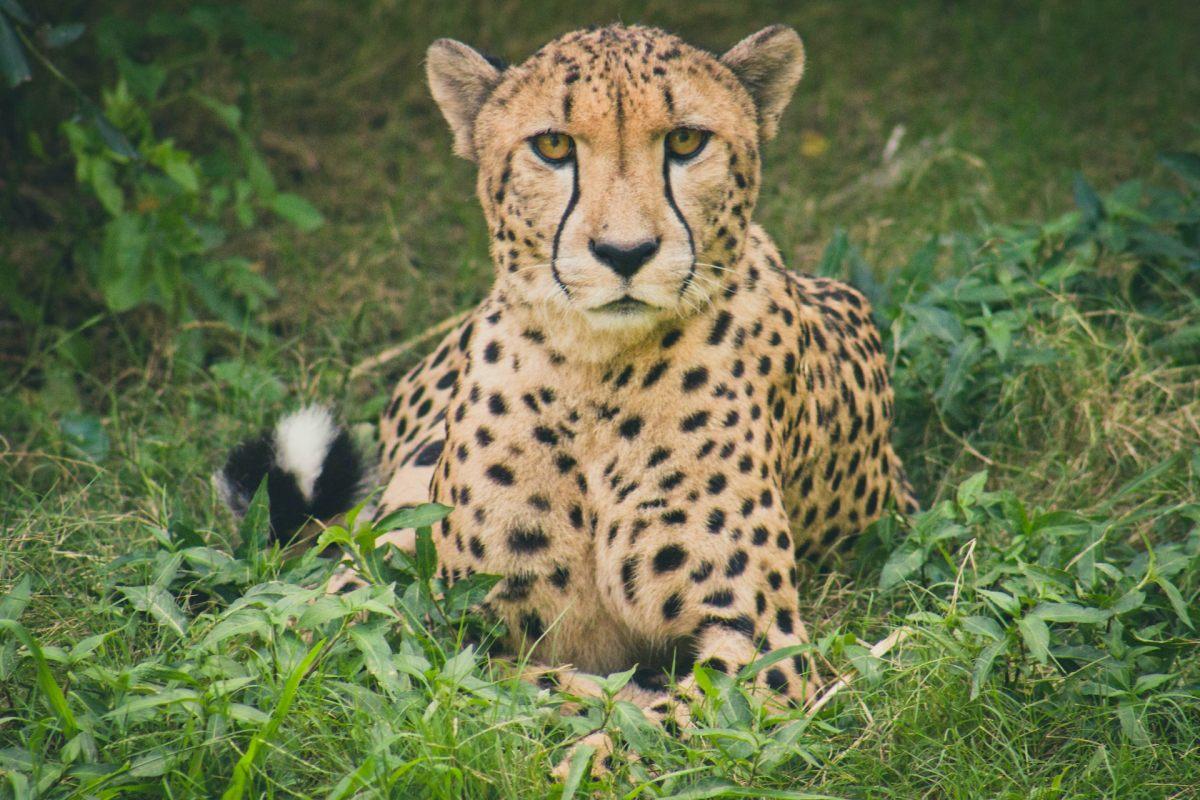
- Name: Northwest African cheetah
- Scientific name: Acinonyx jubatus hecki
- Conservation status:
It appears one thing the most famous animals have in common is that they are infamously threatened. The Northwest African cheetah, also called the Saharan cheetah, is a subspecies of cheetah native to the Sahel and the Sahara.
Compared to other African cheetahs, the Northwest African cheetah has a shorter and whiter coat as well as a smaller body. It is also an incredibly fast predator that majorly hunts by night. Its diet is made of gazelles and other antelopes and hares.
4. Northern white rhinoceros
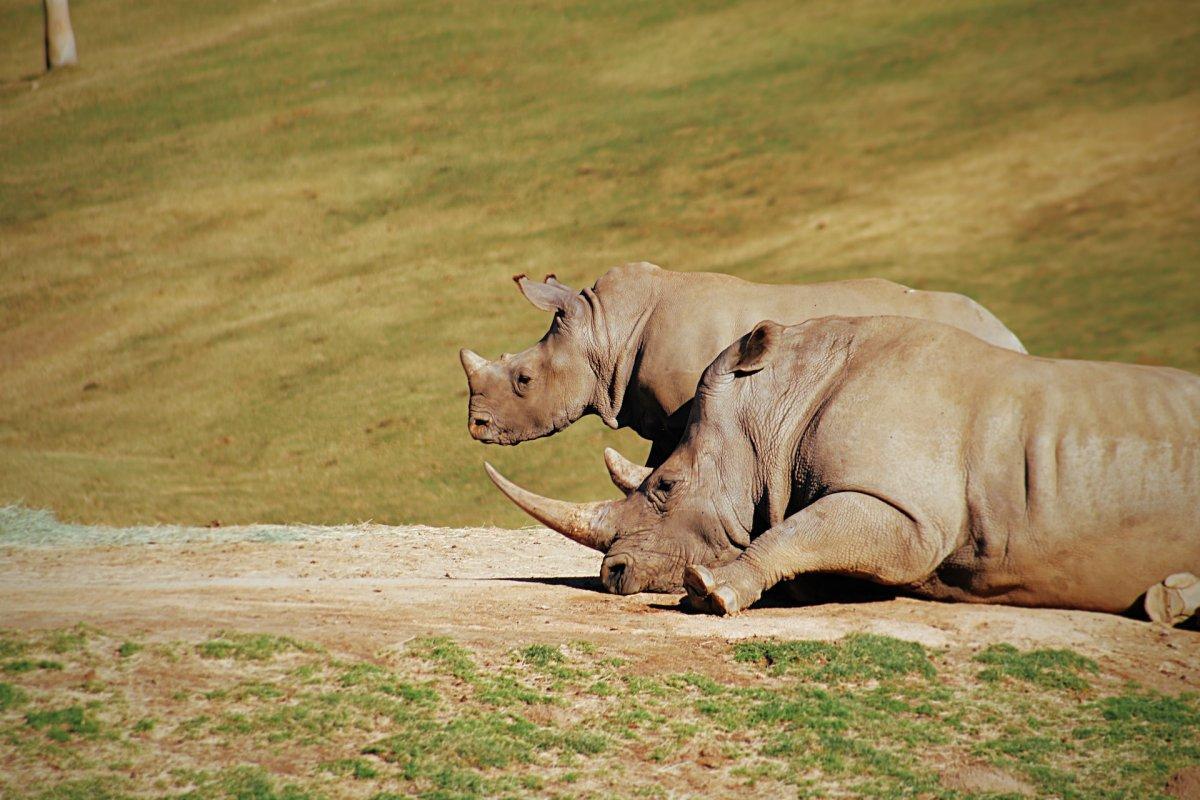
- Name: Northern white rhinoceros
- Scientific name: Ceratotherium simum cottoni
- Conservation status:
The northern white rhinoceros, also known as the northern square-lipped rhinoceros, is a subspecies of the white rhinoceros. It used to live in most of the eastern and central African countries south of the Sahara, but it is now functionally extinct: there are only two known individuals on the planet… and they are both females.
These animals, named Fatu and Najin, are constantly protected by armed guards, even though they cannot carry a newborn calf. Until further notice and discovery of possible other individuals in the wild, the Northern white rhinoceros is sadly not long for this world.
5. Bongo
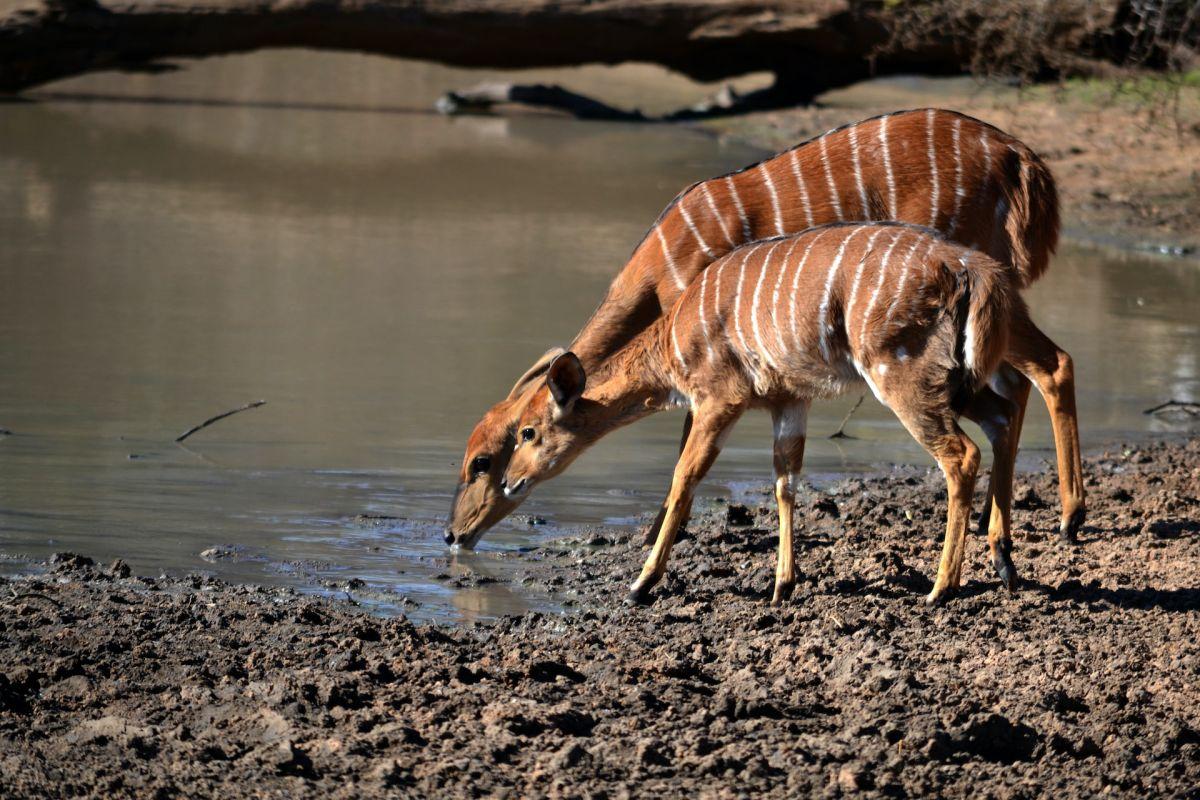
- Name: Bongo
- Scientific name: Tragelaphus eurycerus
- Conservation status:
The bongo is an herbivorous species of antelope, native to central and western Africa. It is a forest ungulate active at night, with very distinctive white stripes all over its reddish-brown coat.
The global population of the bongo has drastically declined in the past decades, mostly due to human pressure and poaching. Local extinctions were even reported in some Kenyan regions. The “Bongo Surveillance Programme” estimates the number of bongos in the wild to be 140, scattered in separate populations.
6. African forest buffalo
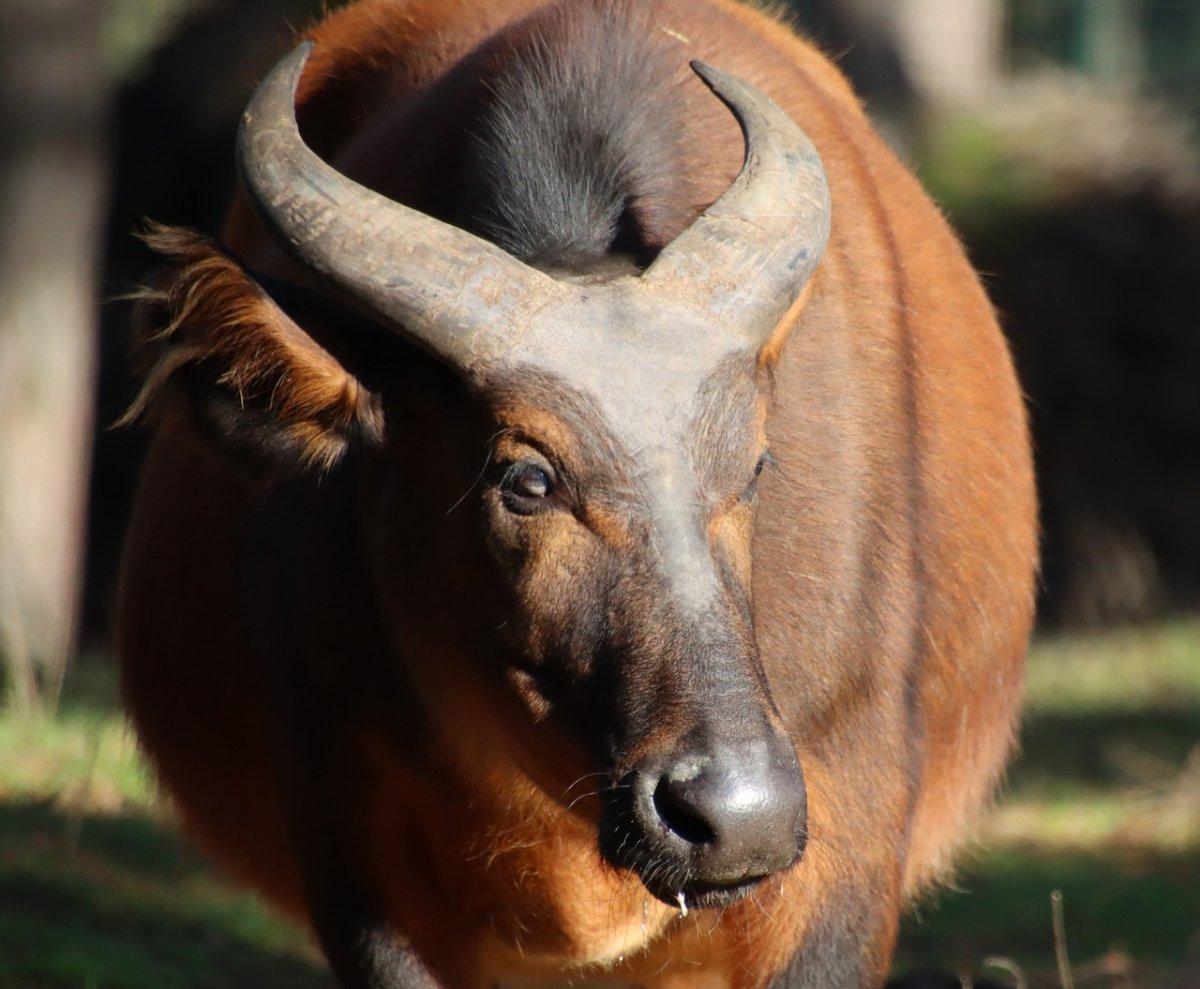
- Name: African forest buffalo
- Scientific name: Syncerus caffer nanus
- Conservation status:
The African forest buffalo also called the dwarf buffalo or the Congo buffalo is one of the least known species of African buffalos. It is the smallest subspecies and is the only one that can be found in rainforest areas. Because of all those differences, it might be classified as a distinct species.
This buffalo has a recognizable reddish-brown hide as well as curved horns that are much smaller than that of their savannah counterparts.
7. Western lowland gorilla
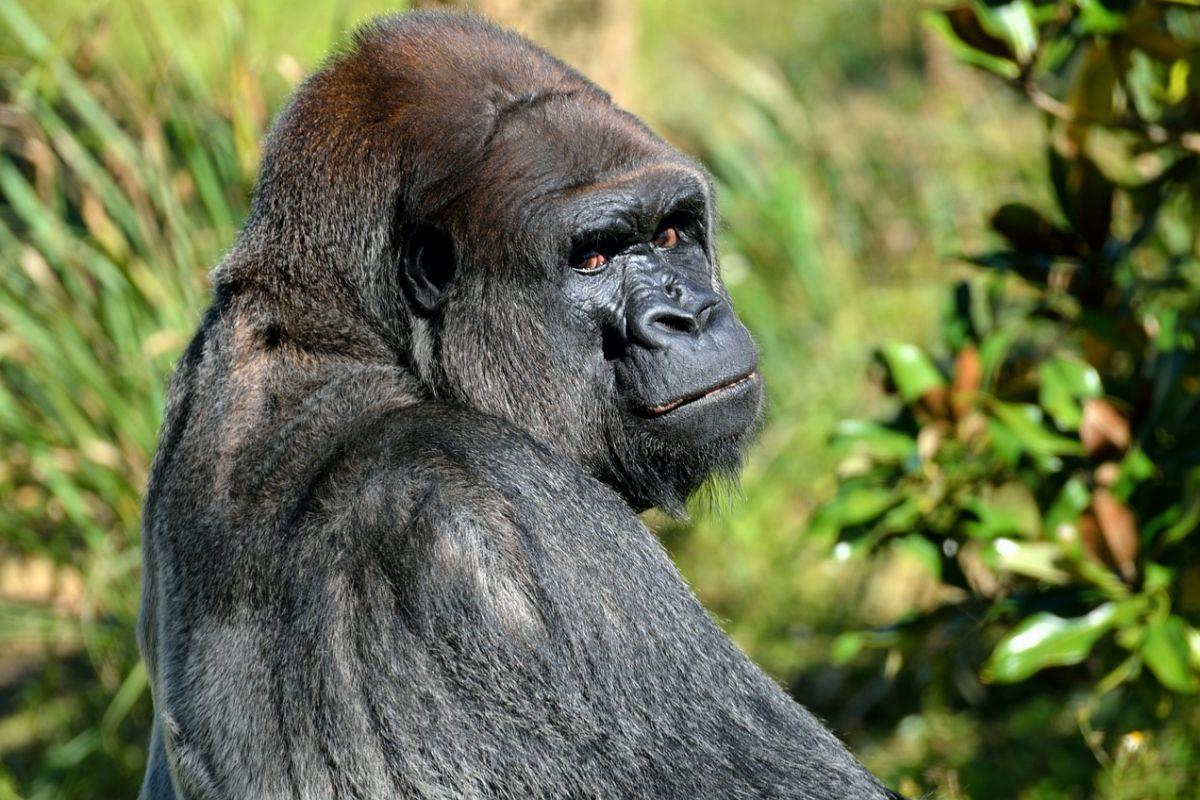
- Name: Western lowland gorilla
- Scientific name: Gorilla gorilla gorilla
- Conservation status:
The western lowland gorilla is another very iconic animal native to Central Africa. Despite being the smallest subspecies of gorilla, it still has prodigious size and strength.
Sadly, like many other gorilla subspecies, the western lowland gorilla is on the verge of extinction. It is severely impacted by stress in captivity, and it has a vastly different behavior: eating disorders, self-injury, aggression, and overgrooming are not uncommon. This is why groups of young gorillas are often seen charging at zoo visitors.
8. Giant otter shrew
- Name: Giant otter shrew
- Scientific name: Potamogale velox
- Conservation status:
The giant otter shrew is a carnivorous and semiaquatic mammal. It inhabits the main rainforest block of Central Africa with some isolated populations in Uganda and Kenya. It is a nocturnal animal that feeds on aquatic species such as crabs, fish, and frogs.
Though the giant otter shrew is listed as being of least concern, its population is on the decline. Deforestation and soil erosion are major threats to the survival of this species.
9. Spotted hyena
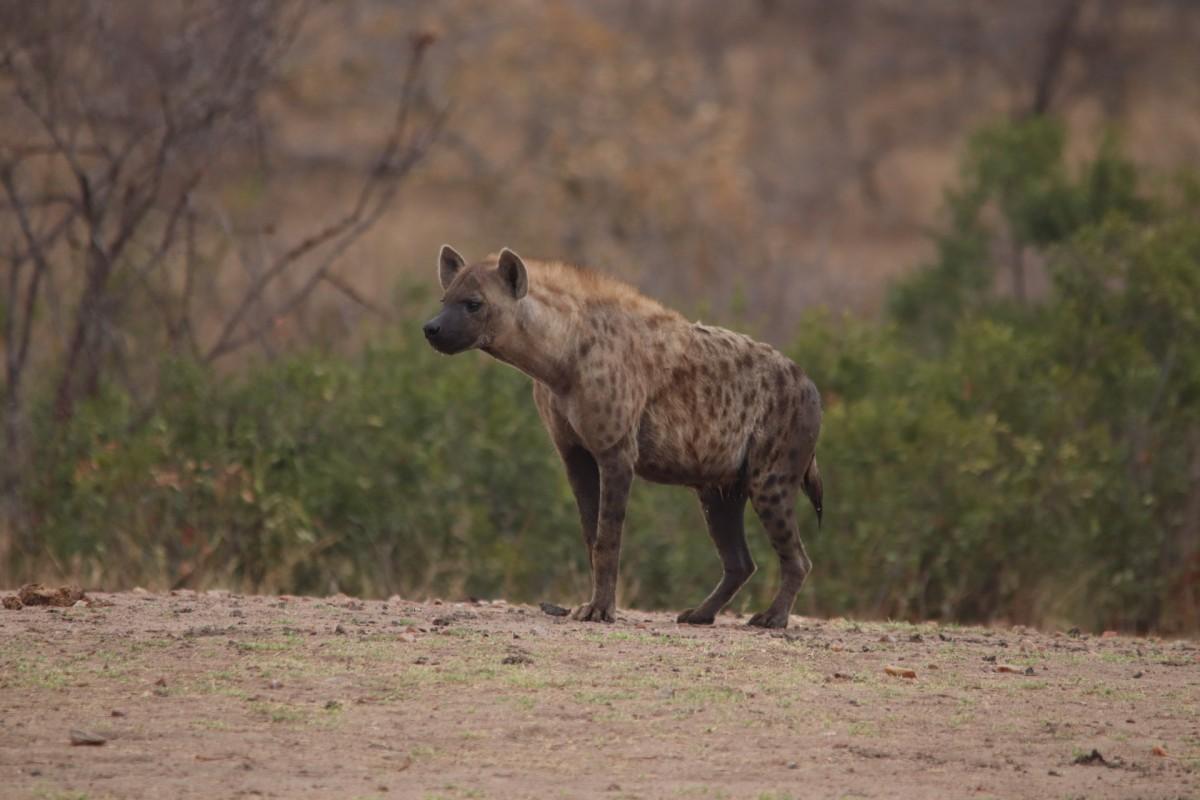
- Name: Spotted hyena
- Scientific name: Crocuta crocuta
- Conservation status:
Maybe you never thought about it this way, but the spotted hyena looks more like a bear than a dog or any other carnivore. It is also known as the laughing hyena for its characteristic cry.
This hyena is one of the most successful species in Africa due to its opportunistic behavior. It will feed on whatever it can find, from small mammals like monkeys to bigger prey such as ungulates. Opposite to most other hyena species, the spotted hyena is not a scavenger, but will occasionally feed on carcasses if needed.
10. Sitatunga
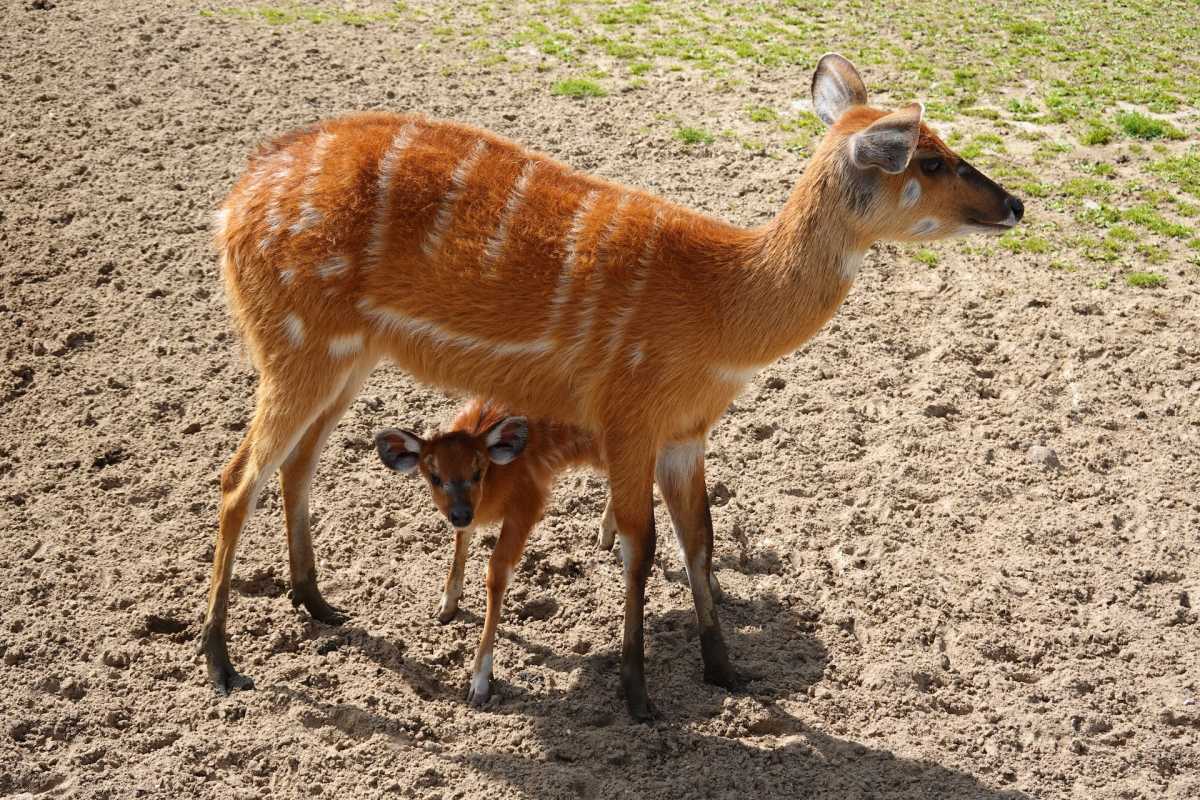
- Name: Sitatunga
- Scientific name: Tragelaphus spekii
- Conservation status:
The sitatunga, also known as the marshbuck, is a species of antelope living in swamps in most of central Africa. Outside of the Central African Republic, it can also be found in Kenya, the Republic of the Congo, Cameroon, and Equatorial Guinea, among others.
It is most active right after down, before dusk, and at night. Most of the time, it is feeding, and it is a sedentary animal that will rarely leave its habitat during the daytime.
11. Lion
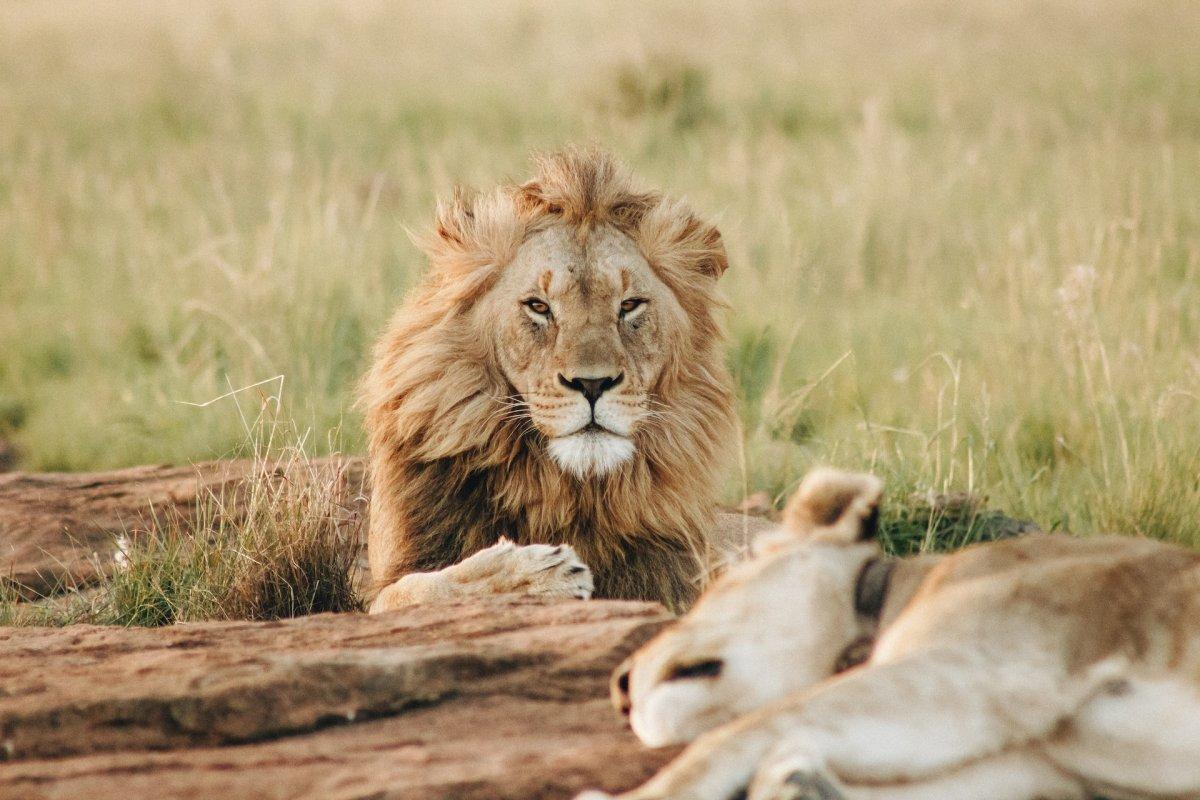
- Name: Lion
- Scientific name: Panthera leo
- Conservation status:
The king of the animals is only #11 on this list, but I could not ignore it. This mighty large cat is native to Africa and India, and it is an apex predator. Occasionally, some lions will scavenge or hunt humans, but these are rare occurrences.
The lion inhabits savannas and grasslands, and is active during the day, opposite to most other wild cats. It has had a long history of interaction with humans and has a very important place in African culture.
12. Cattle egret
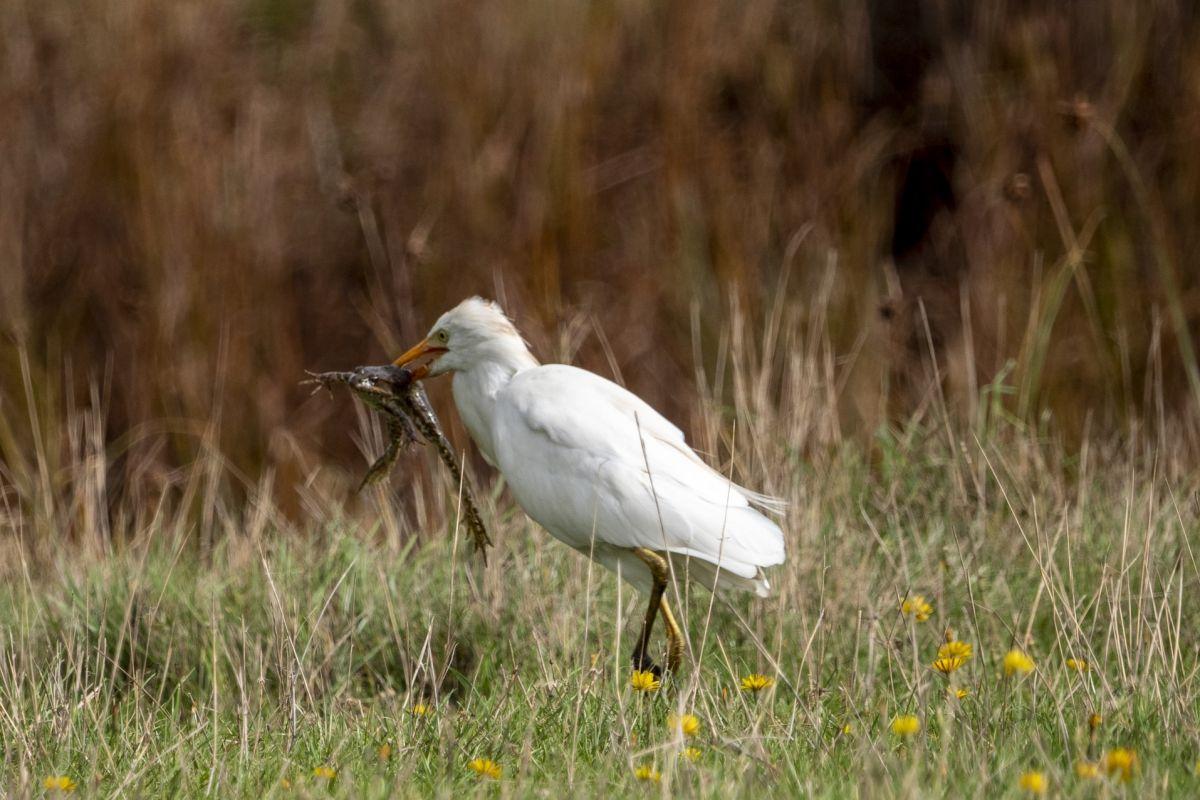
- Name: Cattle egret
- Scientific name: Bubulcus ibis
- Conservation status:
The cattle egret is a species of heron native to tropical, subtropical, and other warm zones. Throughout the last century, it has rapidly become a successful species, and colonized much of the world, though it is native to Asia, Africa, and Europe.
This egret is majorly silent, and nests in colonies around bodies of water. Its diet is made of insects such as beetles, crickets, moths and grasshoppers and spiders, fish, snakes, and frogs.
13. African wild dog
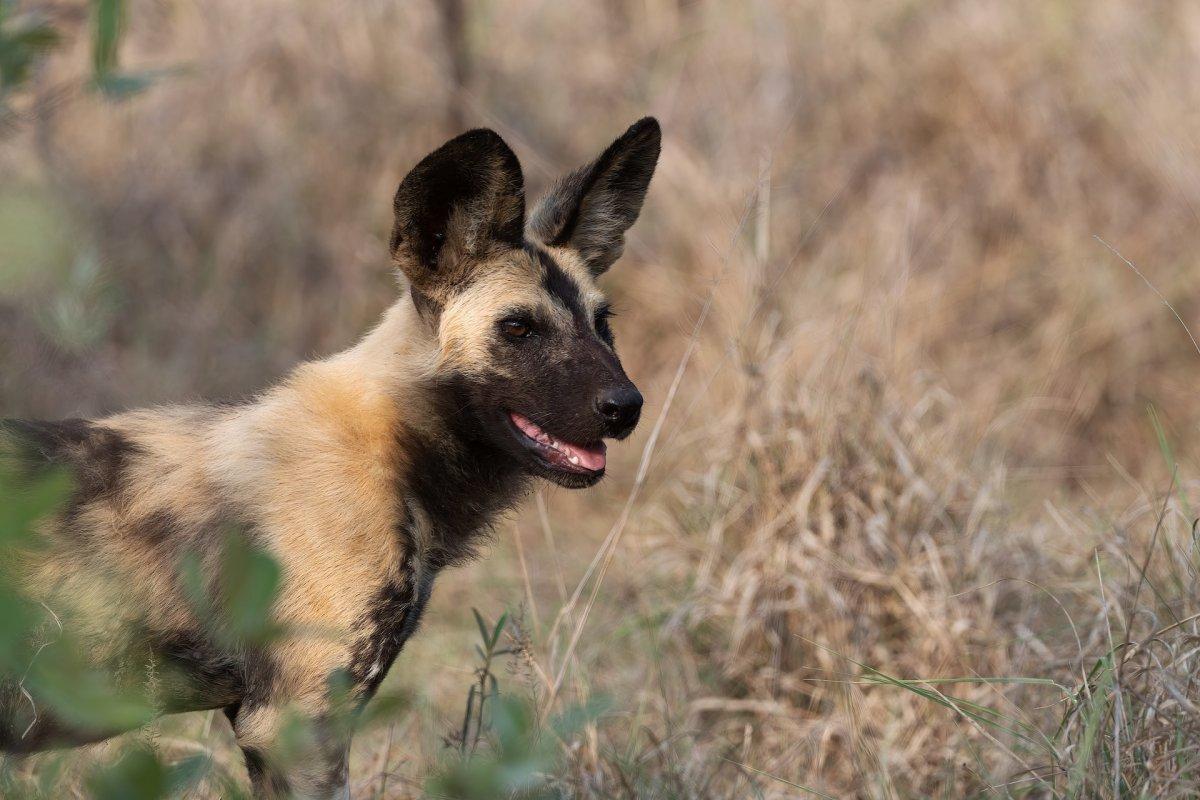
- Name: African wild dog
- Scientific name: Lycaon pictus
- Conservation status:
The African wild dog, also known as the African hunting dog or the African painted dog, is a species of wild canine native to sub-Saharan Africa. It is the largest canine on the continent, and it is severely threatened by persecution, disease, and habitat fragmentation. There are currently around 6,600 adult African wild dogs in the wild.
To feed its young, the African wild dog regurgitates food and allows them to feed first on carcasses.
14. Blue duiker
- Name: Blue duiker
- Scientific name: Philantomba monticola
- Conservation status:
The blue duiker is a peculiar species of antelope native to central, eastern, and southern Africa. It is quite small, and females are larger than males. Tiny, spiky horns surround its mouth, and this animal is active during the day.
It is a monogamous species that lives in pairs throughout the years. It can be found in dense forests, and even though considered of least concern, the blue duiker is threatened by bushmeat hunting.
15. Great white pelican
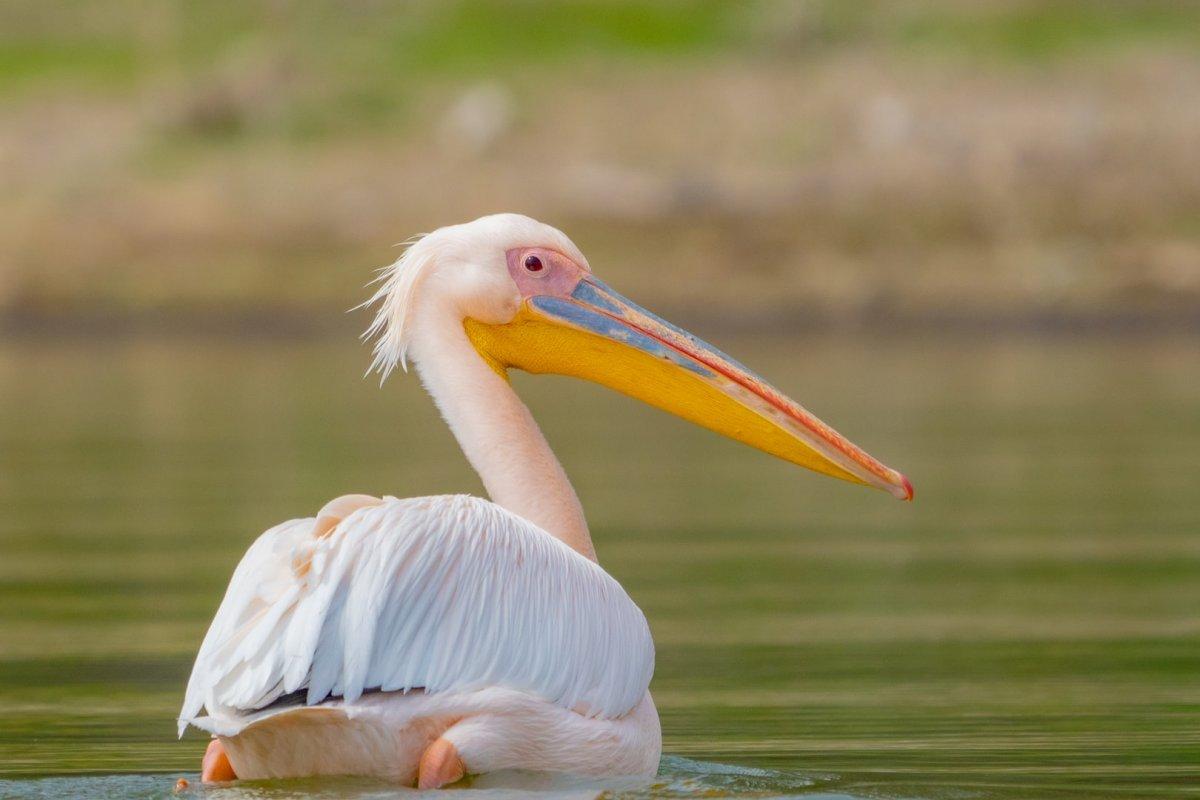
- Name: Great white pelican
- Scientific name: Pelecanus onocrotalus
- Conservation status:
You might not expect this, but the great white pelican, also known as the rosy pelican or the eastern white pelican, is a huge bird. It has a wingspan of 226 to 360 cm / 11.4 to 18.5 in, and a very large characteristic bill, which it uses to feed on its main prey: fish.
Even though it is a humongous bird, the great white pelican can be threatened by eagles who eat fledglings and eggs. Other carnivores like lions, jackals, and crocodiles do not hesitate to attack and hill swimming pelicans.
16. Pennant’s colobus
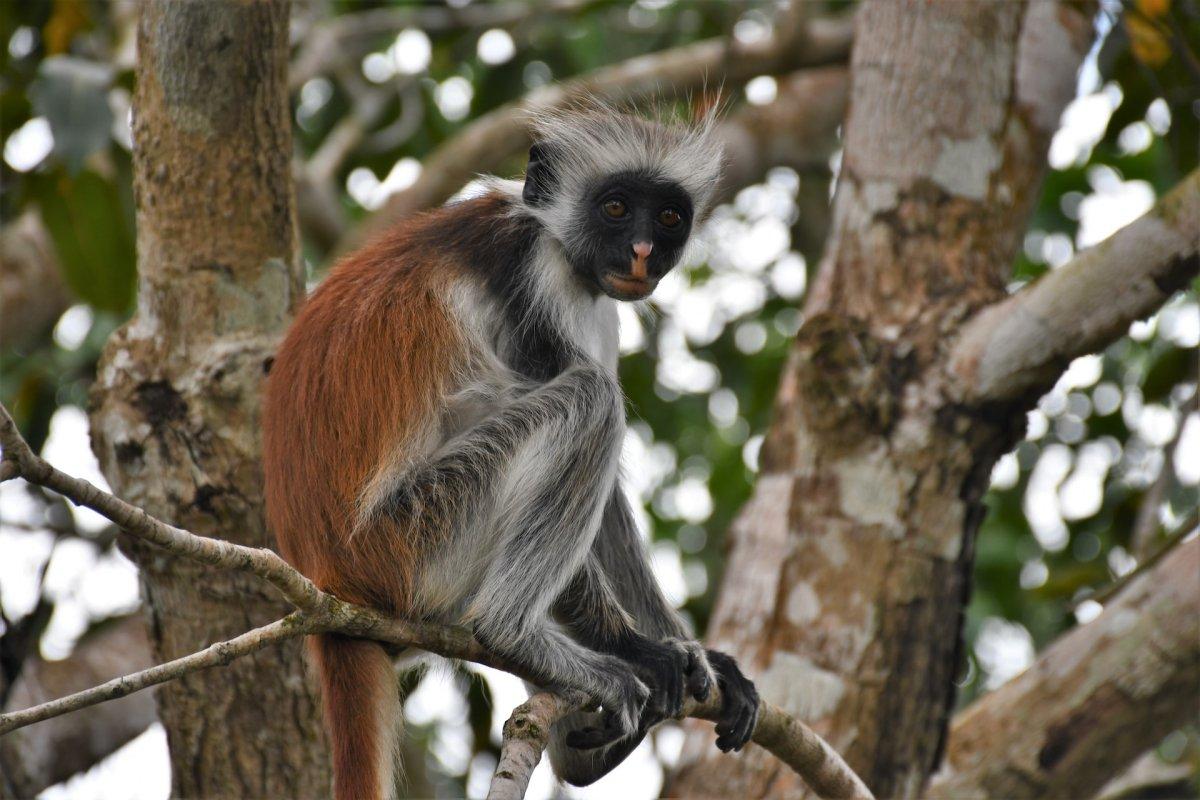
- Name: Pennant’s colobus
- Scientific name: Piliocolobus pennantii
- Conservation status:
Pennant’s colobus, also known as Pennant’s red colobus, is a species of primate endemic to tropical Central Africa. It dwells in trees, and its distribution is surprisingly disjunct. Scattered populations are a rare sight, and this monkey is considered critically endangered because of habitat loss and bushmeat hunting.
Pennant’s red colobus might even be extinct by now, as it was last photographed in 2015. Prior to that, it had not been seen since the 1970s.
17. Giant eland
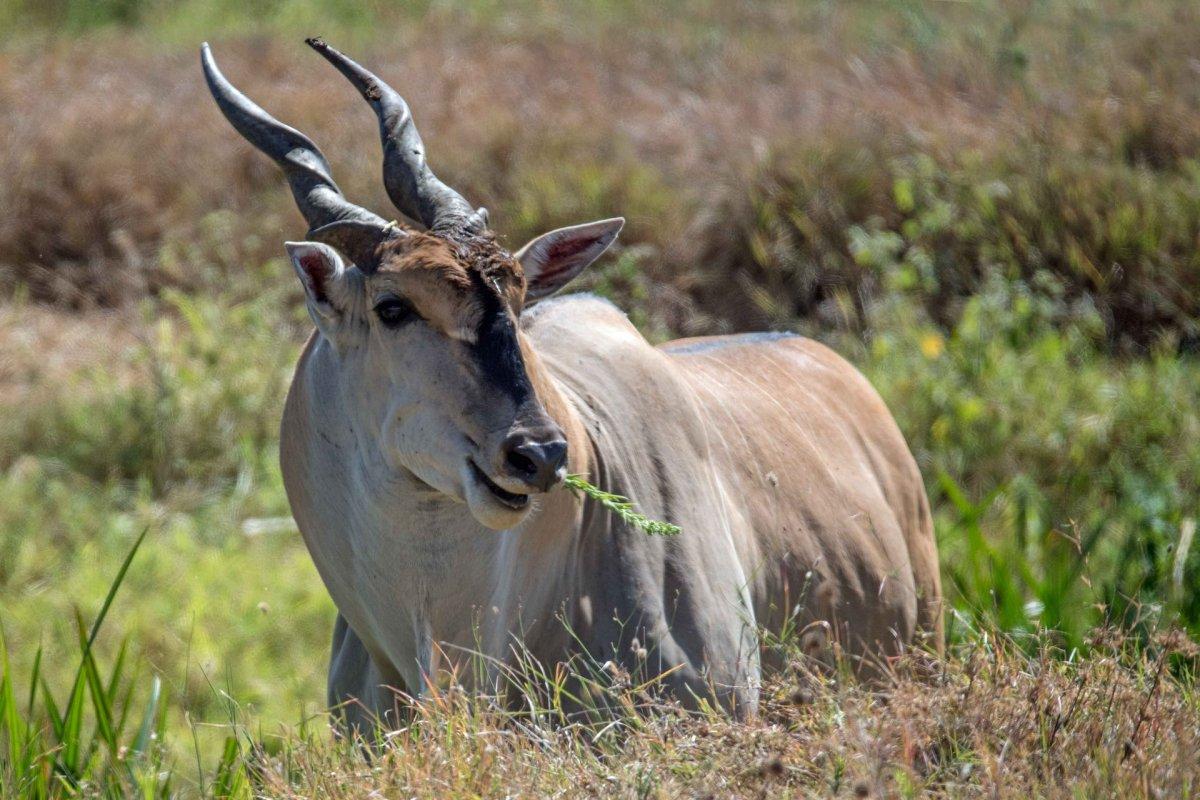
- Name: Giant eland
- Scientific name: Taurotragus derbianus
- Conservation status:
The giant eland, also known as the Lord Derby eland, is a savanna antelope. As its name suggests, it is very large. In fact, it is the largest species of antelope: its body length ranges from 220 to 290 cm / 86.5 to 144 in.
It feeds on grasses, branches, and foliage, and lives in herds of 15 to 25 individuals. Large animals are dangerous prey, even for lions. However, leopards, cheetahs, African wild dogs, spotted hyenas, and Nile crocodiles do not hesitate to attack younger ones.
18. Nile crocodile
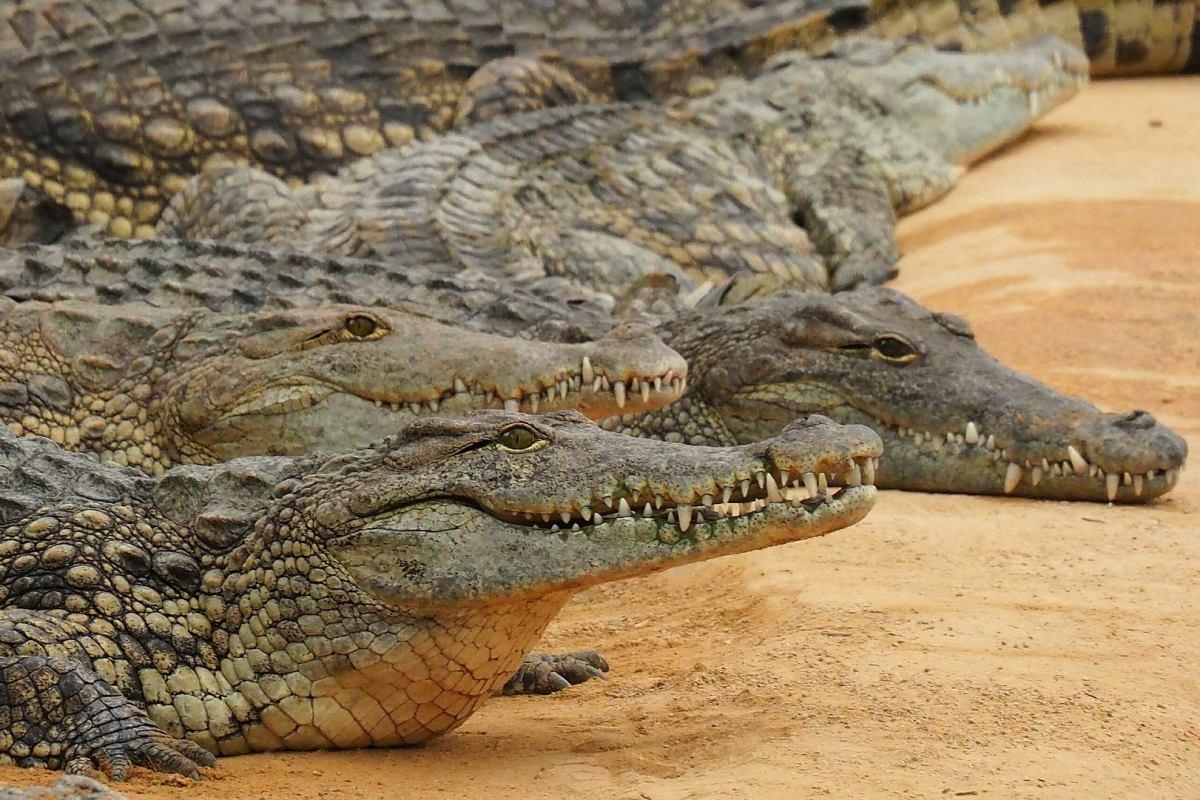
- Name: Nile crocodile
- Scientific name: Crocodylus niloticus
- Conservation status:
Despite its name, the Nile crocodile is not endemic to the Nile river. It is a large crocodilian native to freshwater areas in Africa, where it can be found in 26 different countries, most of them being in sub-Saharan Africa.
This crocodile is an opportunistic apex predator and a very aggressive species. It can, without any problem, attack and kill almost any animal in its range, but it will mostly feed on fish, mammals, birds, and reptiles.
19. Common ostrich
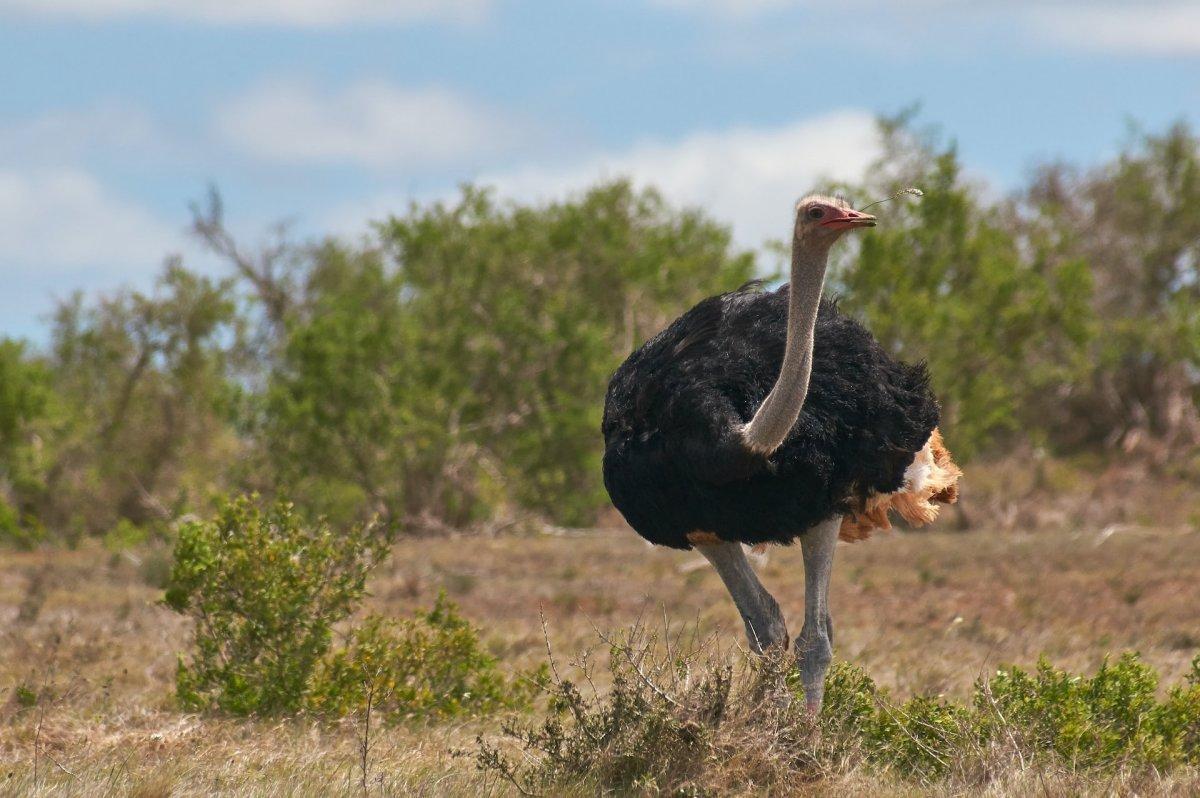
- Name: Common ostrich
- Scientific name: Struthio camelus
- Conservation status:
The common ostrich is the largest bird on the planet. It is flightless but extremely fast: it can reach up to 70 km/h / 40 mph, and run for a long time at 55 km/h / 34 mph, which is the fastest land speed of any bird.
Even though the vast majority of the ostrich’s diet is plant matter, it will also feed on small reptiles and invertebrates. It can be seen in groups of 5 to 50 birds, and it will attack with both its beak and legs if needed.
20. Western tree hyrax
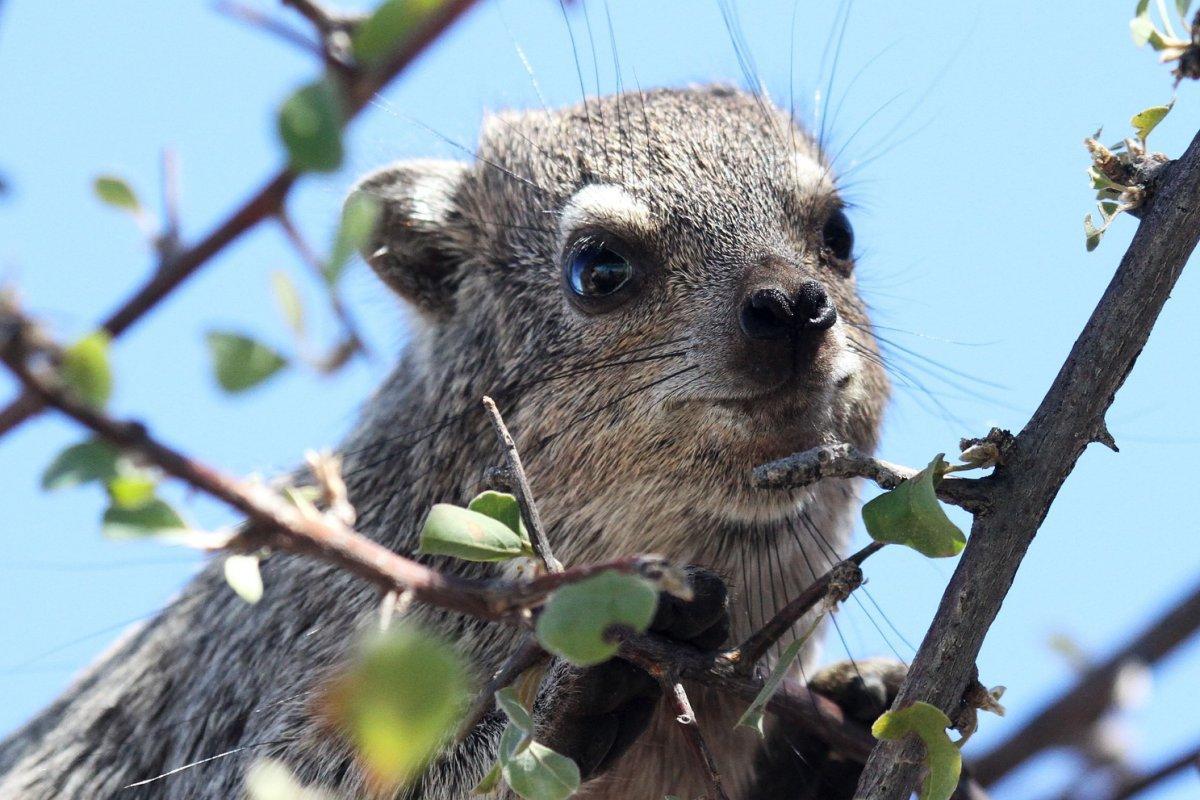
- Name: Western tree hyrax
- Scientific name: Dendrohyrax dorsalis
- Conservation status:
The western tree hyrax, also known as Beecroft’s tree hyrax or the western tree dassie, is a species of tree hyrax native to central and western Africa. It looks like a large guinea pig with a stumpy tail, and its pelage is coarse and thick.
It inhabits tropical and subtropical lowland forests, rocky areas, and moist savannas. This hyrax is often attacked by leopards, hawks, servals, eagles, golden cats, and pythons.
21. Common patas monkey
- Name: Common patas monkey
- Scientific name: Erythrocebus patas
- Conservation status:
The common patas monkey, also known as the hussar monkey or the wadi monkey, is a species of primate native to central and western Africa. It lives on the ground and is sexually dimorphic: males are much larger than females, as they grow up to 87 cm / 34 in in length, while females average 49 cm / 19 in length.
This monkey lives in groups of up to 60 animals, with one adult male, many females, and their offspring. Mature males leave the group when they reach sexual maturity, and join all-male groups.
22. Tree pangolin
- Name: Tree pangolin
- Scientific name: Phataginus tricuspis
- Conservation status:
The tree pangolin is one of eight species of pangolin on the planet. It is also called the three-cusped pangolin or the white-bellied pangolin and is the most common African subspecies of forest pangolin. Like all other species, it is endangered, but it is not as threatened as others.
This pangolin inhabits most of central and western Africa and has a prehensile tail it uses for balance. It walks on all fours and has poor eyesight.
23. Serval
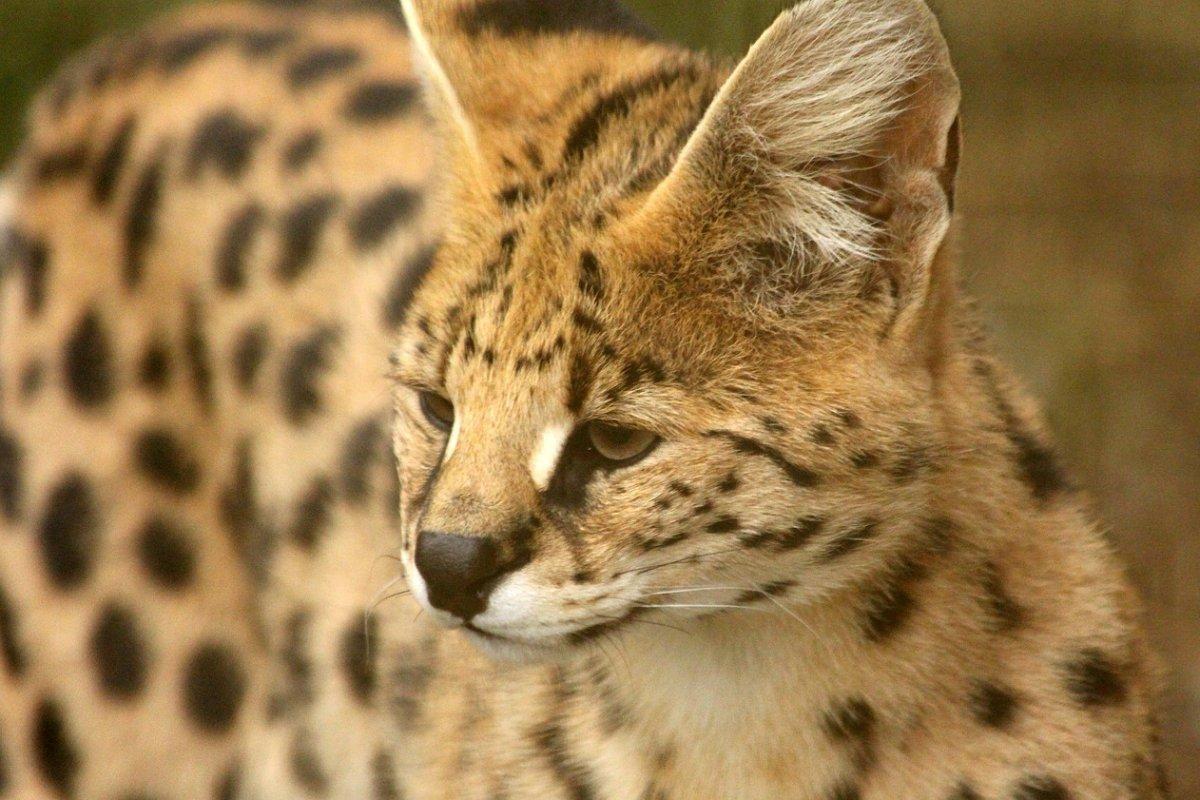
- Name: Serval
- Scientific name: Leptailurus serval
- Conservation status:
The serval is a species of wild cat native to sub-Saharan Africa. It may occasionally be seen in the Sahel and in North Africa, but it mostly lives in dry areas of the rest of the continent.
It is a solitary carnivore, active both by day and at night, and it preys on rodents, insects, reptiles, birds, and frogs. It has a particularly strong sense of hearing to locate prey, and can easily leap over 2 m / 6 ft 7 in above the ground.
24. Common warthog
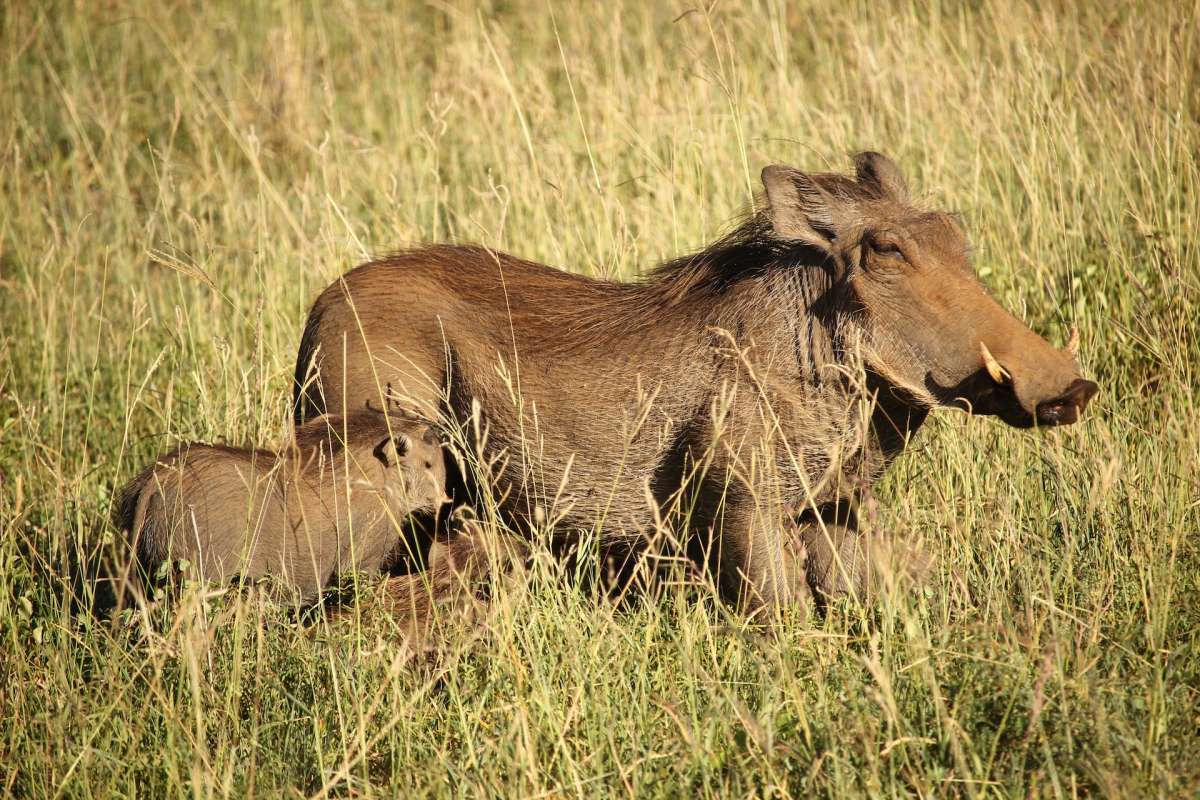
- Name: Common warthog
- Scientific name: Phacochoerus africanus
- Conservation status:
Outside of the large carnivores, the elephant and the giraffe, the common warthog is one of the most famous and iconic animals in all of Africa. It was famously pictured in Disney’s 1994 classic movie “Lion King”, by Pumbaa.
Just like its movie counterpart, the real-life common warthog is very gluttonous: it is an omnivore that will feed on anything from fruits and grasses to eggs, insects, and even carrion.
25. Kordofan giraffe
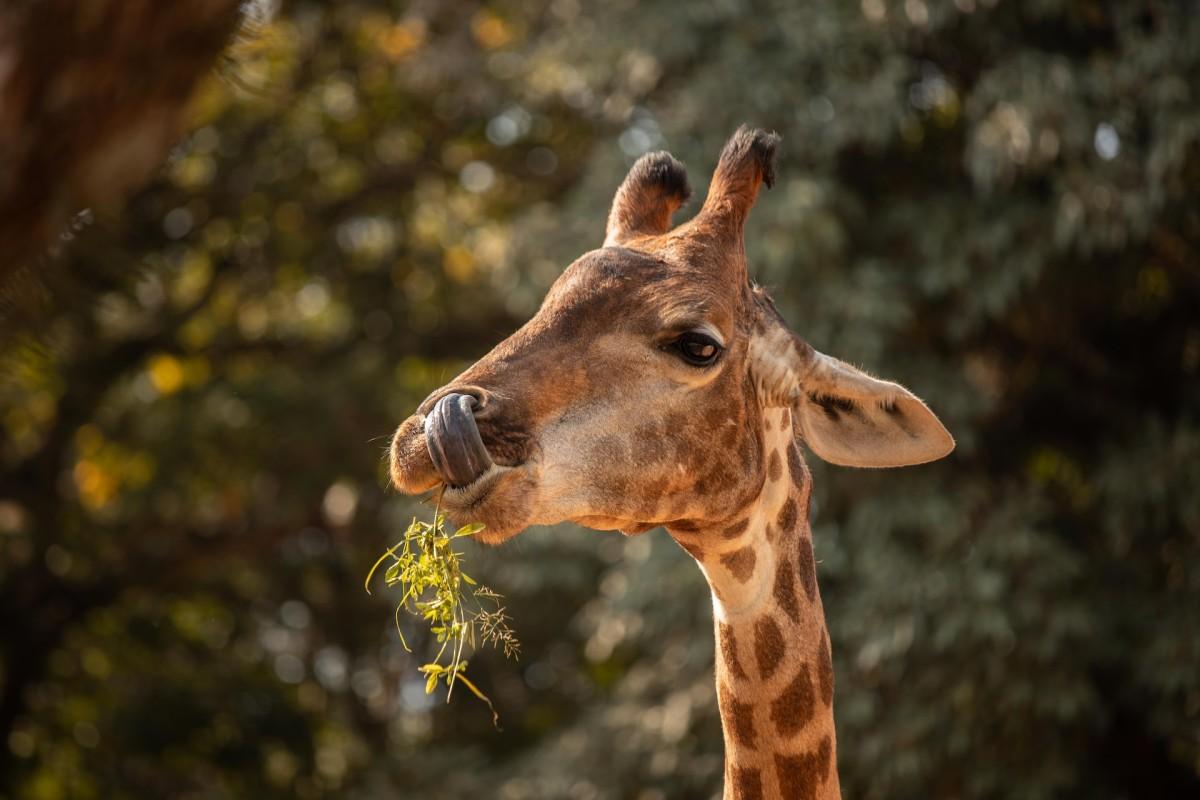
- Name: Kordofan giraffe
- Scientific name: Giraffa camelopardalis
- Conservation status:
The Kordofan giraffe is a subspecies of giraffes with very scattered populations. It can be found in the Central African Republic, in northern Cameroon, in southern Chad, and in western Sudan. It is critically threatened by poaching, as its skin is used for luxury goods: there are only 38 individuals in the Garamba National Park in the Democratic Republic of the Congo, and 2,000 in the wild.
Compared to other giraffes, the Kordofan giraffe is relatively small, at 3.8 to 4.7 m / 12.4 to 13.1 ft.
26. Waterbuck
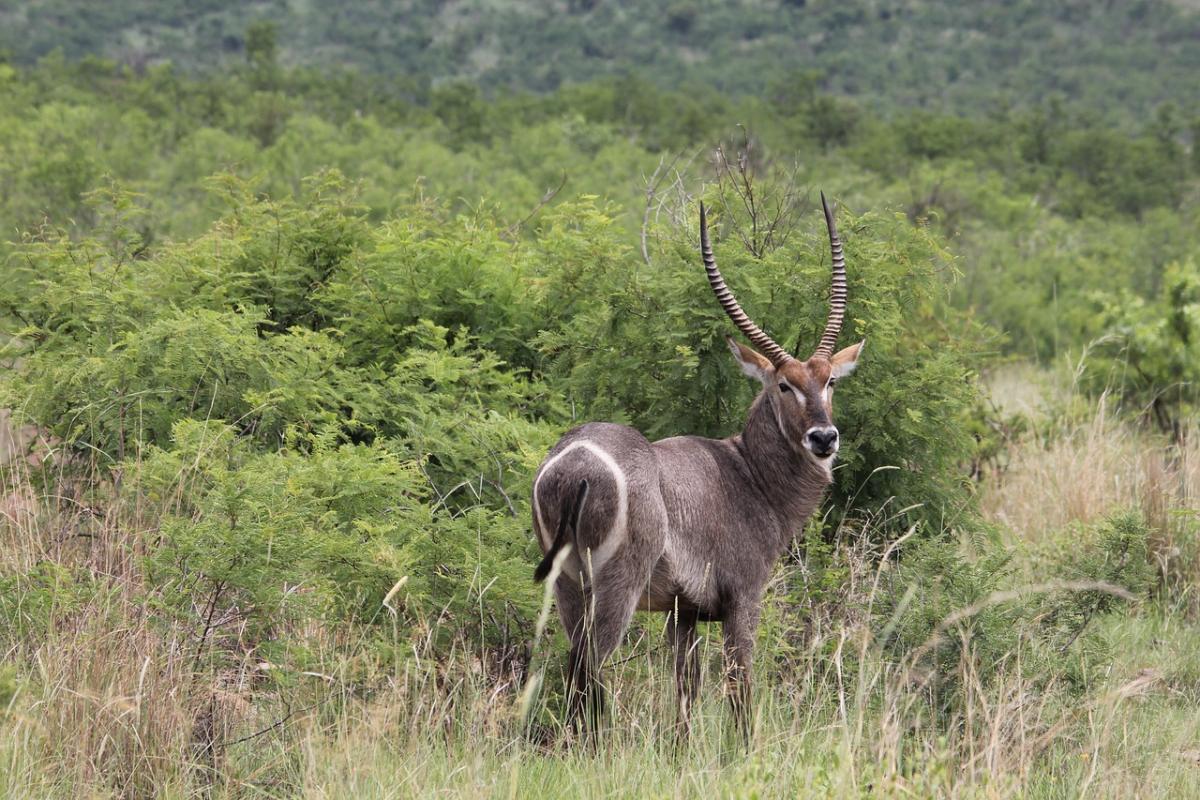
- Name: Waterbuck
- Scientific name: Kobus ellipsiprymnus
- Conservation status:
The waterbuck is a large species of antelope native to sub-Saharan Africa. Like many other antelope species, it is sexually dimorphic: males are taller and heavier than females and have long and spiral horns, that can reach up to 99 cm / 39 in long.
It is a gregarious and sedentary animal, that lives in herds of 6 to 30 individuals. Because it cannot tolerate dehydration in hot weather, it always stays next to bodies of water.
27. Central African potto
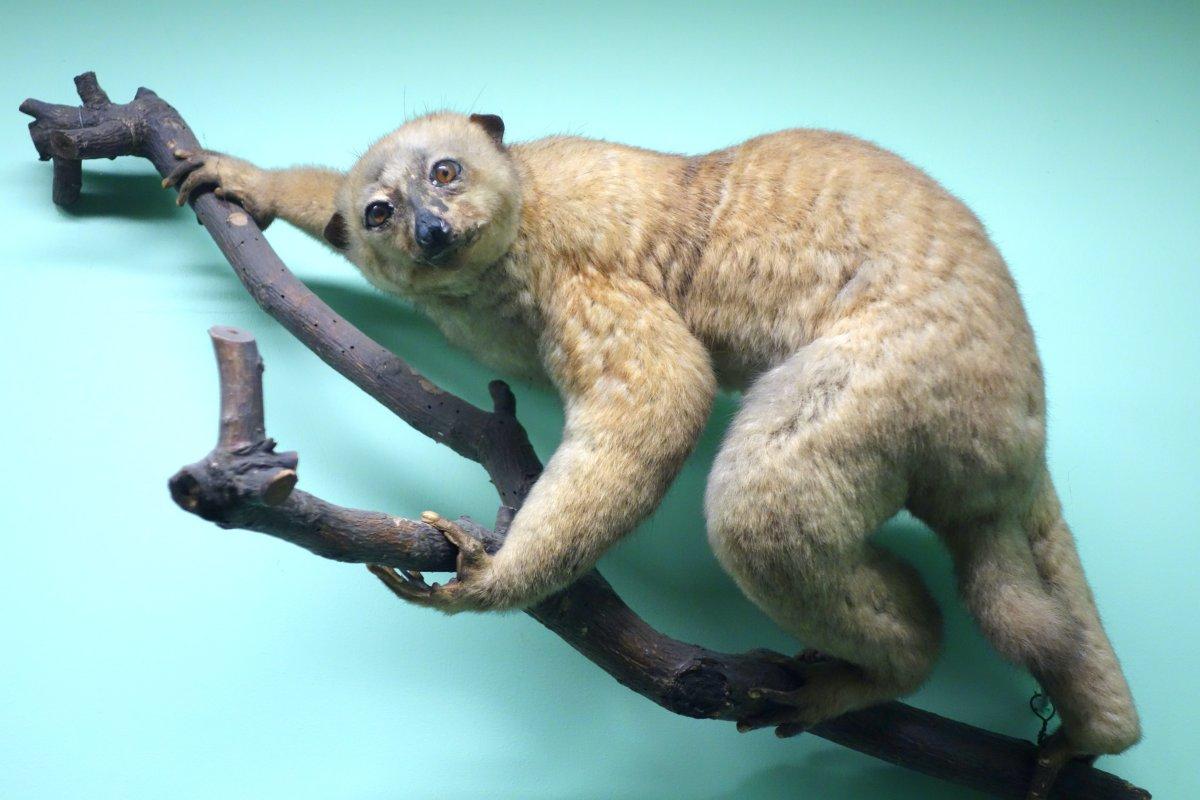
- Name: Central African potto
- Scientific name: Perodicticus edwardsi
- Conservation status:
The Central African potto, also known as Milne-Edward’s potto, is a species of primate that can be found in Central Africa.
The name “potto” might come from “pata”, a tailless monkey. This monkey was first described by Eugène Louis Bouvier, a French entomologist, and carcinologist, in 1879. Its main predators are humans and civets: large carnivores cannot reach pottos at the top of the trees, and birds of prey are diurnal.
28. Northeast African cheetah
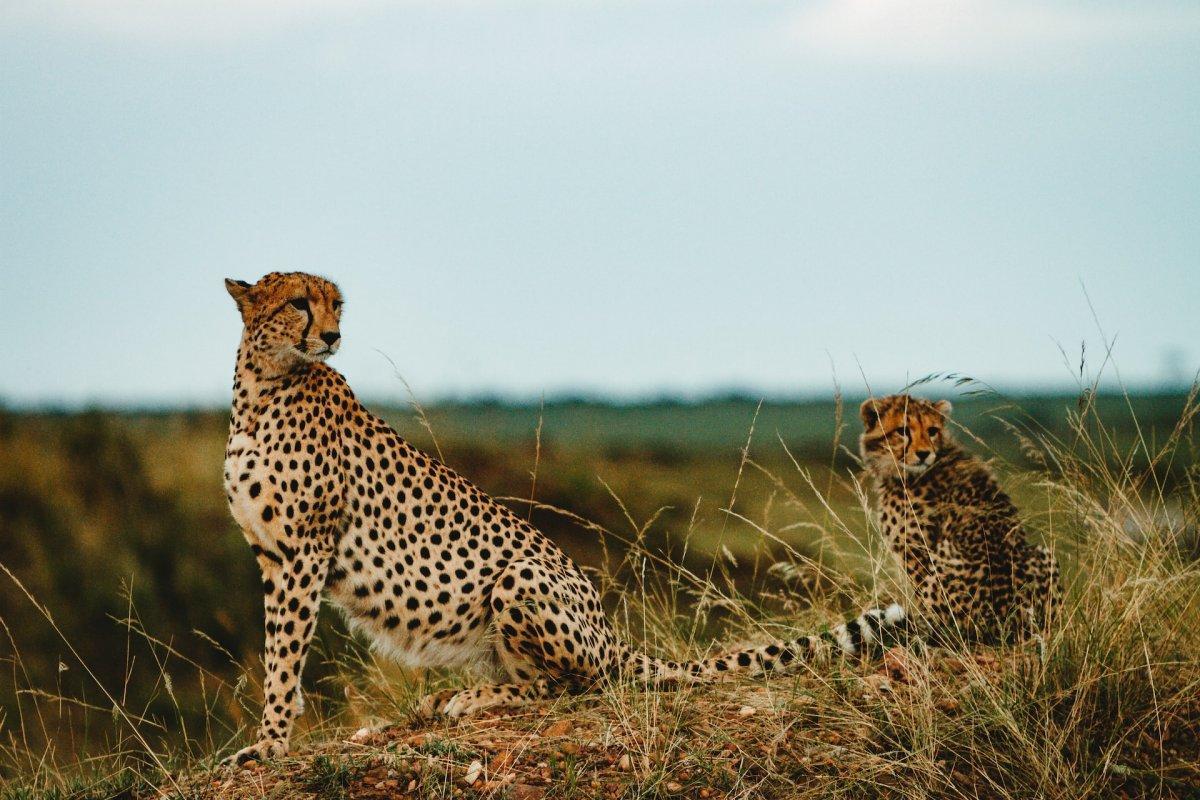
- Name: Northeast African cheetah
- Scientific name: Acinonyx jubatus soemmeringii
- Conservation status:
The cheetah is also a very iconic animal from Africa. It is the fastest land animal on the planet and has a sleek silhouette. There are several subspecies of cheetahs in Africa, and the Northeast African cheetah is closely related to the Southern African cheetah.
It is a large wild cat with a dense and spotted coat. It has a large head compared to other cheetahs, and a darker fur, to match its environment.
—
So there you have them, these were my 28 Central African Republic animals. I hope you enjoyed this list and that you learned something new today.
In case you want to learn more about the wildlife of Central Africa, feel free to keep reading, as I still have lots of things to tell you about:
Endangered Animals of the Central African Republic
This is definitely the saddest part of the list, but it is crucial to raise awareness. Because of this, let’s go through the list of endangered animals in the Central African Republic.
Here are the animals in danger of extinction in the Central African Republic.
- None
- Slender-snouted crocodile
- Sociable lapwing
- Western gorilla
- Black rhino
- Hooded vulture
- and 5 more…
- African spurred tortoise
- Spinetail Devil ray
- Chimpanzee
- Lappet-faced vulture
- Secretarybird
- and 9 more…
To see the full list of endangered species in the Central African Republic, head over to the International Union for Conservation of Nature’s Red List.
What is the National Animal of the Central African Republic?
The national animal of the Central African Republic is the elephant.
Even though the mighty African elephant, the world’s largest land mammal, is a major symbol of most African countries, its global population has significantly reduced due to poaching for its ivory.
There are two subspecies of African elephants in the Central African Republic: the bush and the forest elephant. Sadly, both of them are more and more endangered.
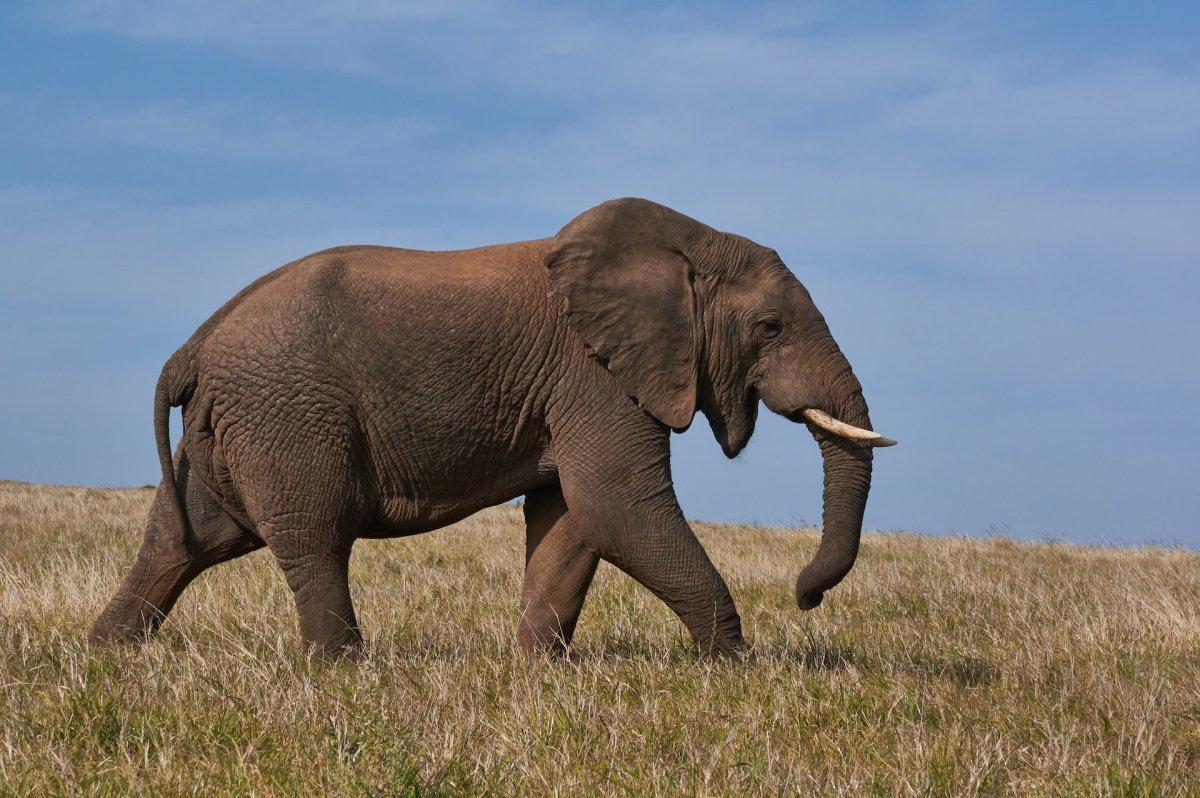
How Many Animals Native to the Central African Republic?
What is the diversity of native animals in the Central African Republic?
Let’s look at the total number of species of Chordata (mammals, birds, fishes, and reptiles).
Total number of animal species in the Central African Republic: 1,529 (14,205 in total in Sub-Saharan Africa)
What is the most common animal in the Central African Republic?
The most common animal in the Central African Republic is probably the greater spot-nosed monkey, also known as the putty-nosed monkey.
It lives in groups of one mature male, several adult females, and their offspring. It can usually be seen quite easily either in the rainforest, the savannah, or the in-between areas.
More About Animals in the World!
Loved these Central Africa animal facts? Want to see what animals live in other countries?
Then check out these posts:
Or click here to see ALL the facts up on the blog! Spoiler alert: there’s A LOT of them.
Share the knowledge! Click on the buttons below to share information about these famous animals in Central African Republic with your friends, and help them learn more about the world 🙂
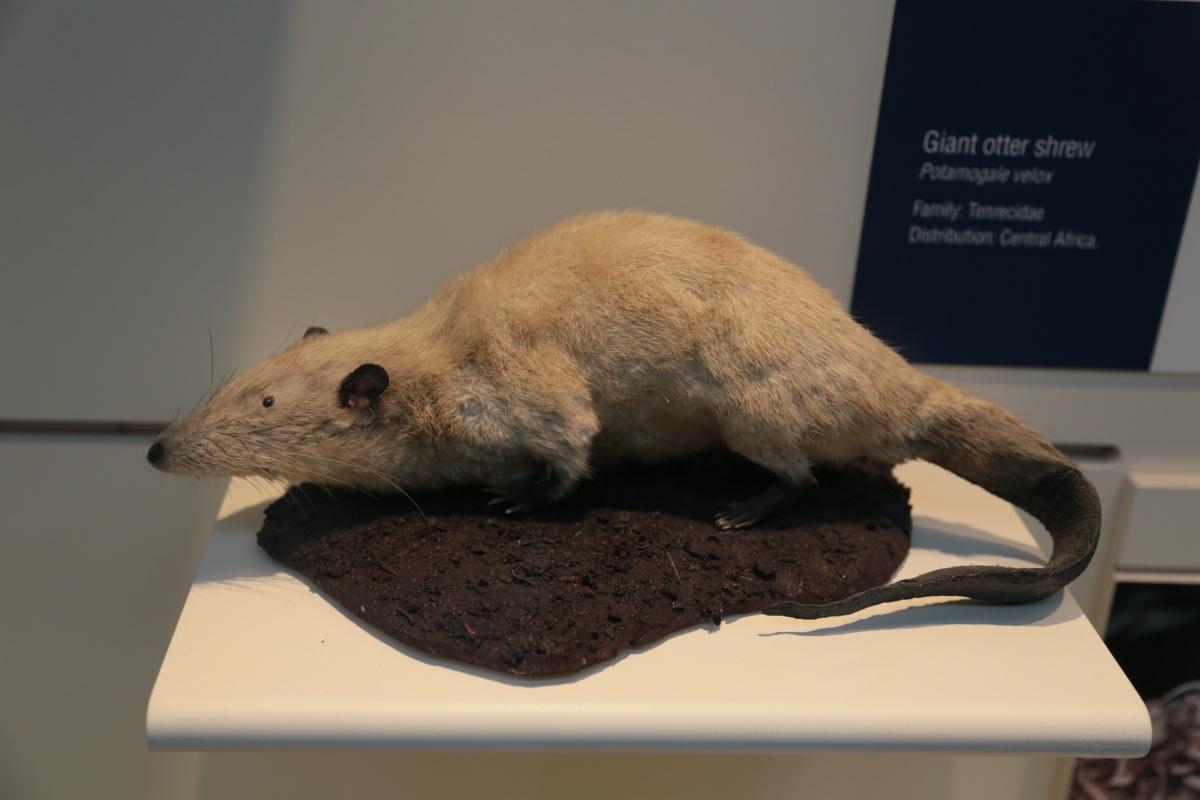
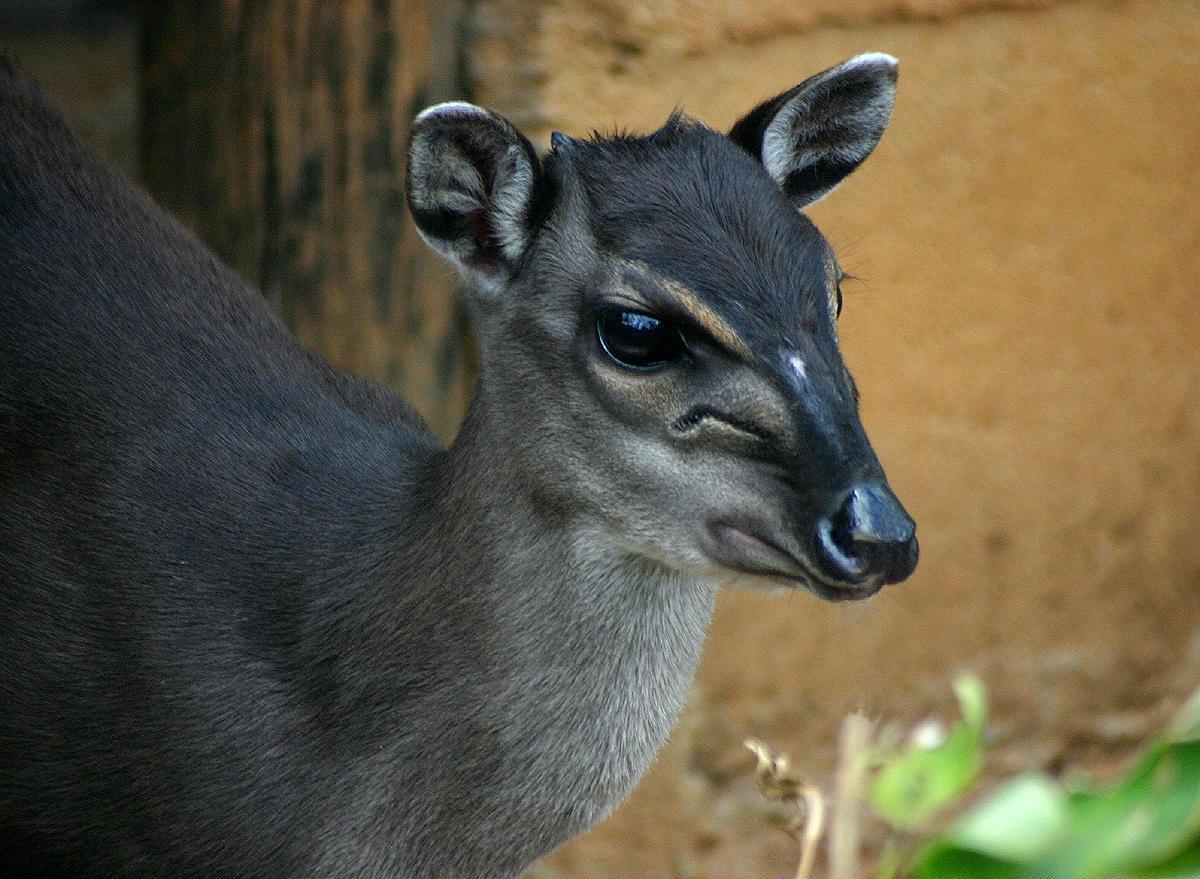
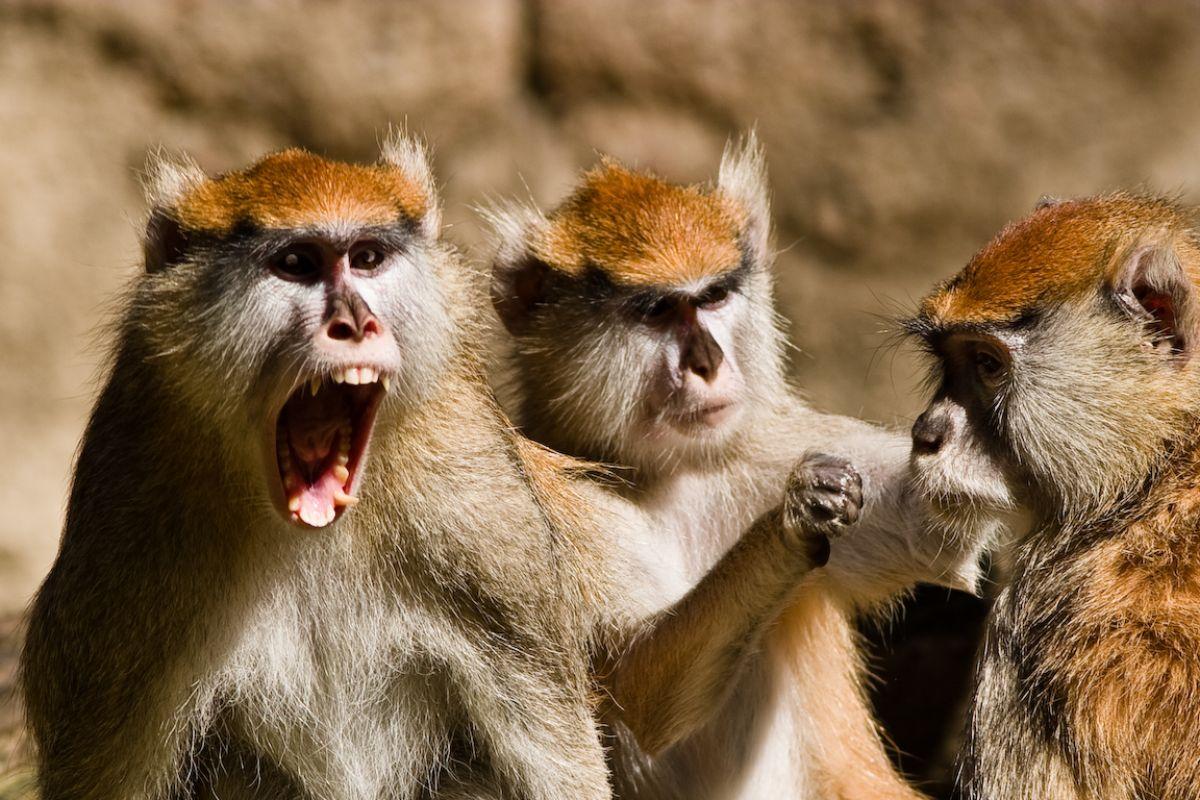
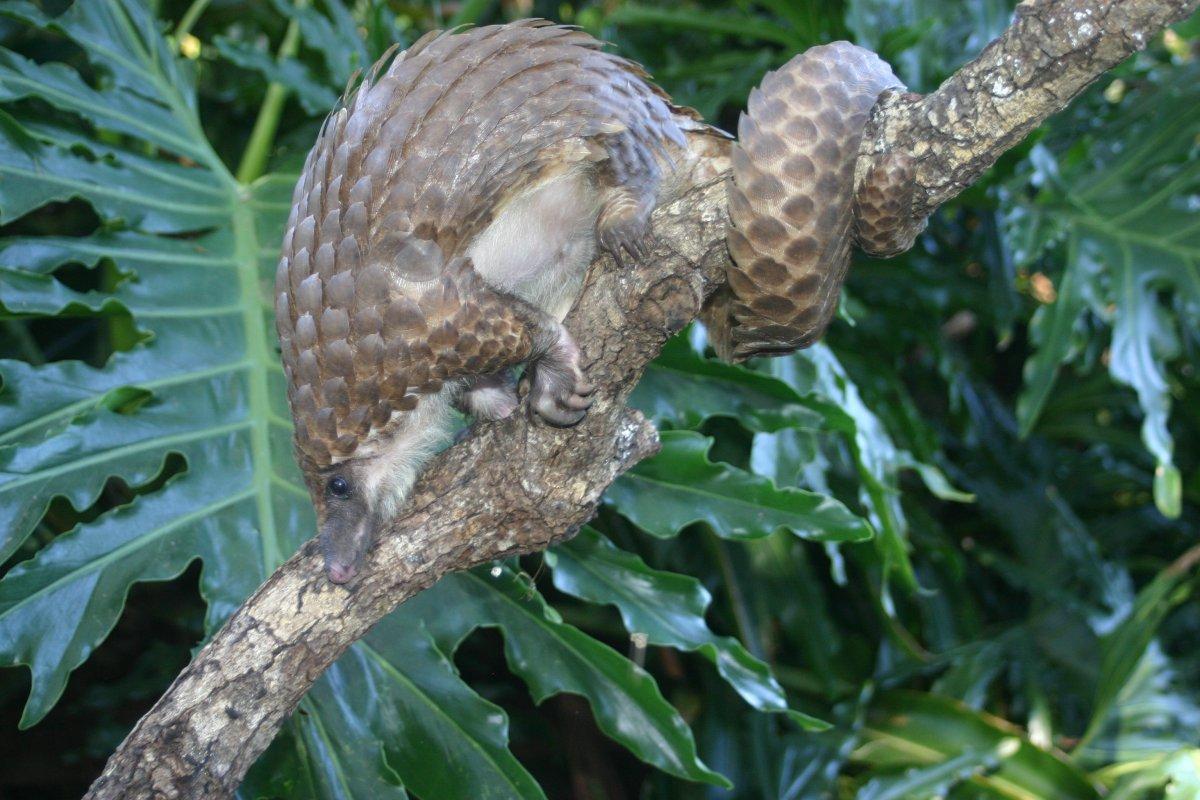

![18 Wild Animals in Turkmenistan [Wildlife in Turkmenistan]](https://www.kevmrc.com/wp-content/uploads/2022/12/18-wild-animals-in-turkmenistan.jpg)
![13 Wild Animals in Nicaragua [Wildlife in Nicaragua]](https://www.kevmrc.com/wp-content/uploads/2022/08/13-wild-animals-in-nicaragua.jpg)
![35 Wild Animals in Colombia [Wildlife in Colombia]](https://www.kevmrc.com/wp-content/uploads/2022/07/35-wild-animals-in-colombia.jpg)